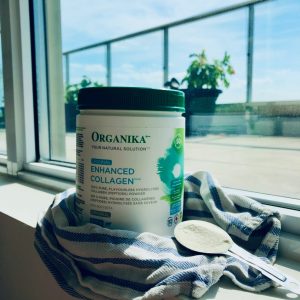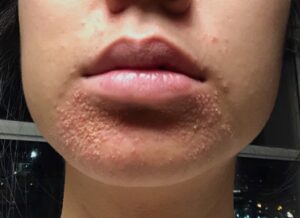
Elevate Your Glow: A Guide to Collagen Powder and Healthy, Clear Skin
Collagen. Have you heard of it? It seems to be cropping up everywhere with claims around skin health, joint health, hair and nail growth and
The word probiotics seem to be a buzzword these days but the options on store shelves can be daunting and endless if you don’t know what you’re looking for. I know I definitely felt this way before jumping into my studies at the amazing Canadian School of Natural Nutrition!
Keeping this in mind, I thought it would be helpful to provide a brief overview of probiotics in general and what you want to look for on the high level when purchasing one. Please keep in mind that probiotics are a wide field and there are some factors you want to consider prior to implementing them such as existing health conditions or medications, so you should always discuss with your doctor before taking any new supplements.
Now that we’ve got that out of the way, let’s start with the basics.
I’m going to start off with the microbiome. This is essentially a collection of organisms such as bacteria and fungi that live in and on the body including the mouth, skin and intestinal tract. They play a very important role in our metabolic function, protecting us from pathogens and with assimilating our food to name a few! The gut is where the majority of our microbiome is housed.
Probiotics are essentially the good organisms and bacteria that we need for many of those functions. Although these naturally occurring probiotics can easily be disturbed or destroyed through things such as antibiotics, the birth control pill, pesticides, low fibre and high sugar intake etc.
It’s worth mentioning that probiotics can be found naturally in fermented foods such as kimchi, sauerkraut, tempeh (fermented tofu), kombucha and kefir.
While probiotic supplements can come from humans, animals or vegetarian sources so you’ll want to look out for this depending on your current lifestyle or preferences.
The two most common strains on the market include Lactobacillus & Bifido

There are trillions of different kinds of probiotic bacteria and organisms, but the two most common strains you’ll see on the market include Lactobacillus and Bifido and within these two there are several sub-strains.
Generally when looking for a probiotic you also want to consider the ratio of the two within your supplement depending on your reason for taking the probiotic. For example, if you are looking to address something like constipation you’ll want a probiotic that has a heavier ratio towards Bifidio whereas general maintenance and immune system function would be more suited to a higher ratio of Lactobacillus.
This is important because you’ll recall that probiotics are living organisms and we want as many active organisms as possible (as many as the guaranteed amount on the label).
Good manufacturers will ensure that they account for transportation time and temperature while meeting the guaranteed probiotic amount on the label so it really comes down to preference and convenience.
What’s your biggest struggle when it comes to shopping for digestive health supplements? Comment below or tag me on instagram at @happyhealthcc or #happyhealthcc. I’d love to know!

Collagen. Have you heard of it? It seems to be cropping up everywhere with claims around skin health, joint health, hair and nail growth and

Are you struggling with the daily discomfort and frustration of perioral dermatitis? If you’re anything like me, then you know that perioral dermatitis is one

Perioral (periorificial) dermatitis is a red rash that circles your mouth. Your skin can be scaly, dry and flaky with swollen, inflamed bumps called papules…Perioral
